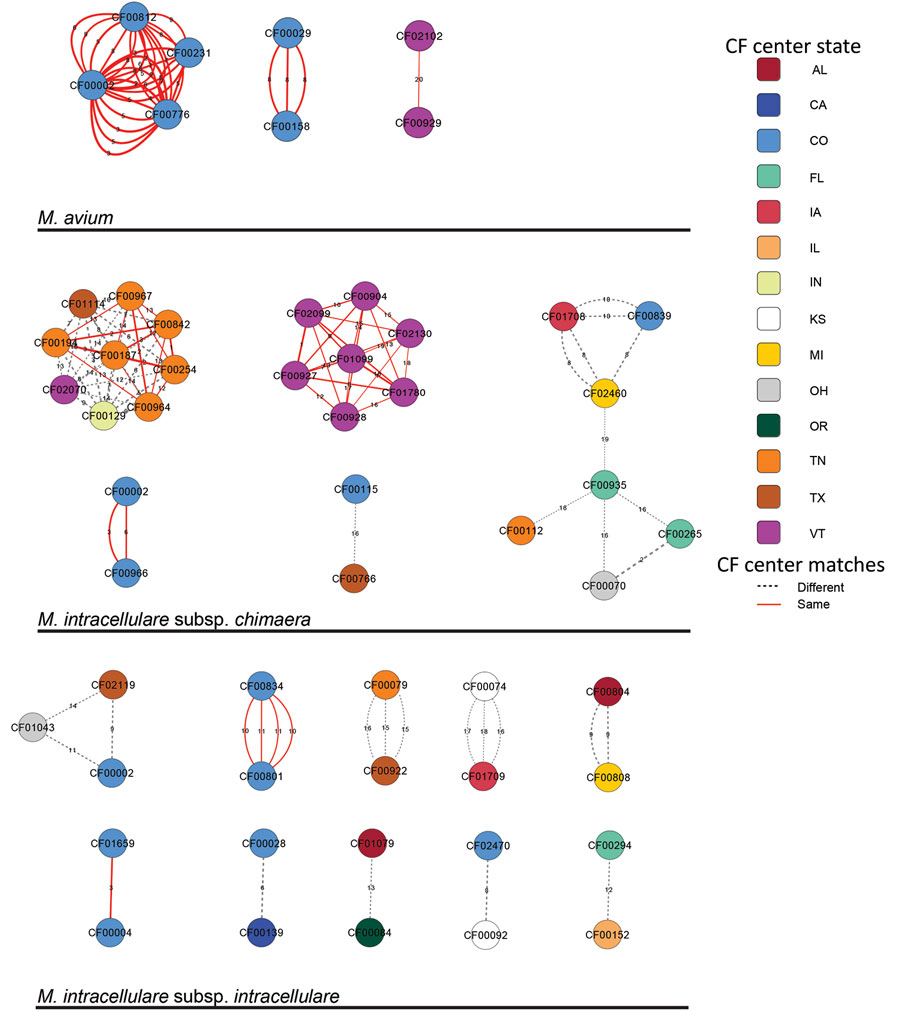Volume 27, Number 11—November 2021
Research
Population Genomics and Inference of Mycobacterium avium Complex Clusters in Cystic Fibrosis Care Centers, United States
Figure 6

Figure 6. Genetic clusters of Mycobacterium avium, M. intracellulare subspecies chimaera, and M. intracellulare subsp. intracellulare in persons with CF in a study of Mycobacterium avium complex clusters in cystic fibrosis centers, United States. Three clusters of M. avium, 5 clusters of M. intracellulare subsp. chimaera, and 10 clusters of M. intracellulare subsp. intracellulare were identified. Each node represents a patient with >1 isolate having significant genetic similarity to an isolate in >1 patient. The color of each node represents the state of the submitting CF care center. Each edge represents genetic similarity between the isolates. Connecting edges are colored by matches within a center (red) or between different centers (dashed gray), and edge thickness is weighted from 0 SNPs (thickest) to 20 SNPs (thinnest) and the exact number of SNPs specified. Nodes with multiple connecting edges represent multiple isolates matching between patients. CF, cystic fibrosis; SNP, single-nucleotide polymorphism.
1These first authors contributed equally to this article.